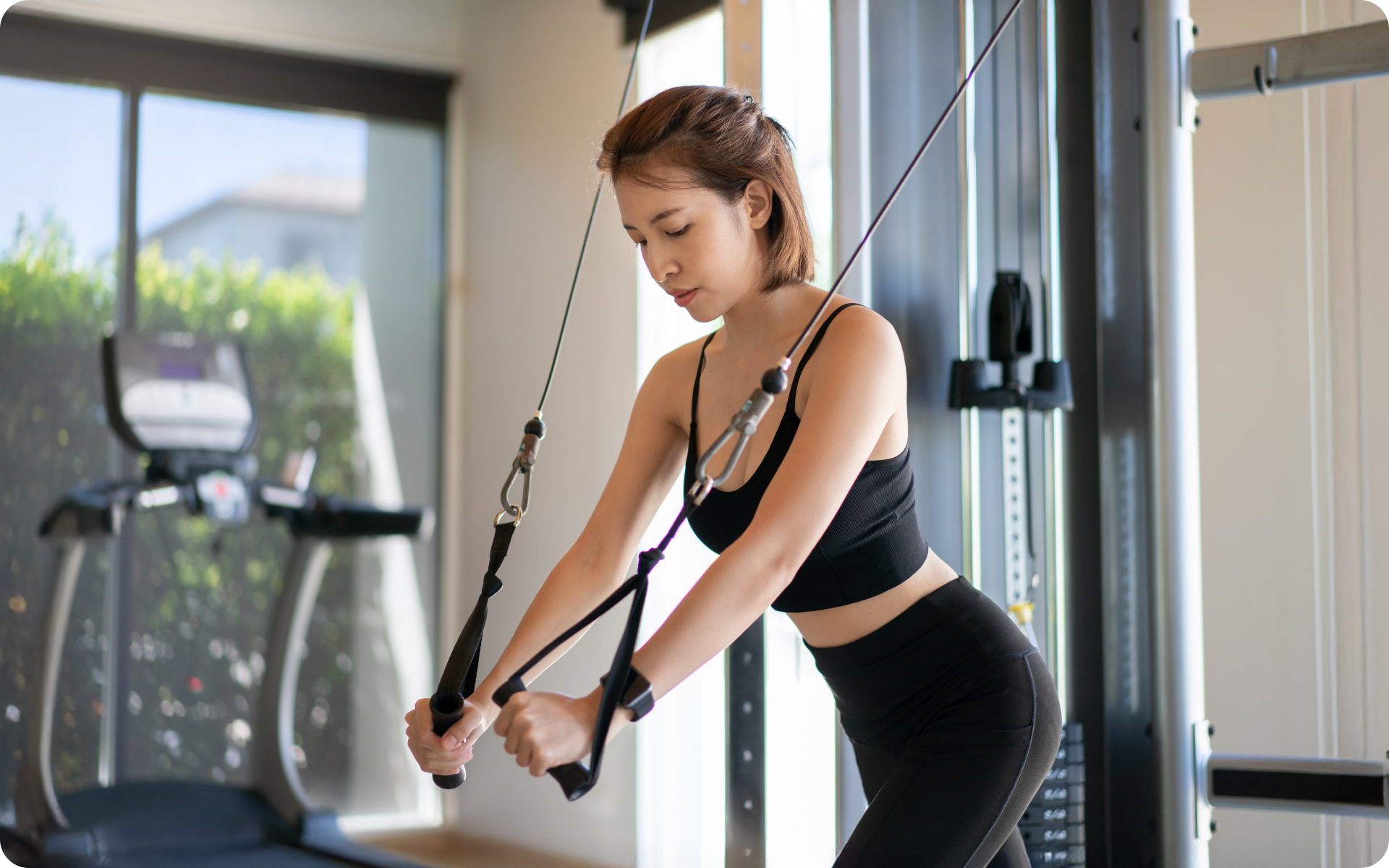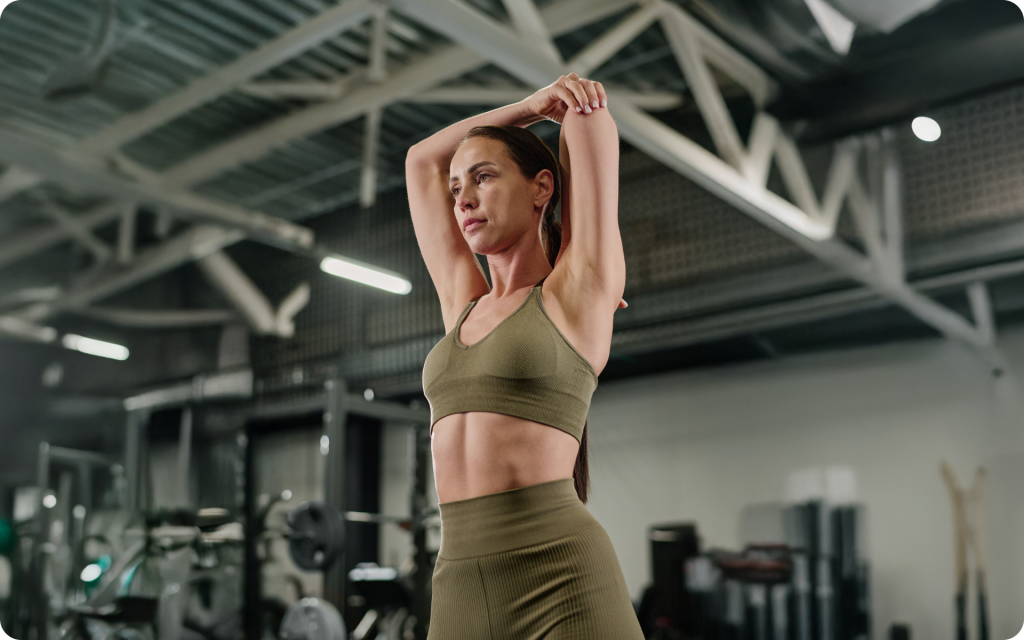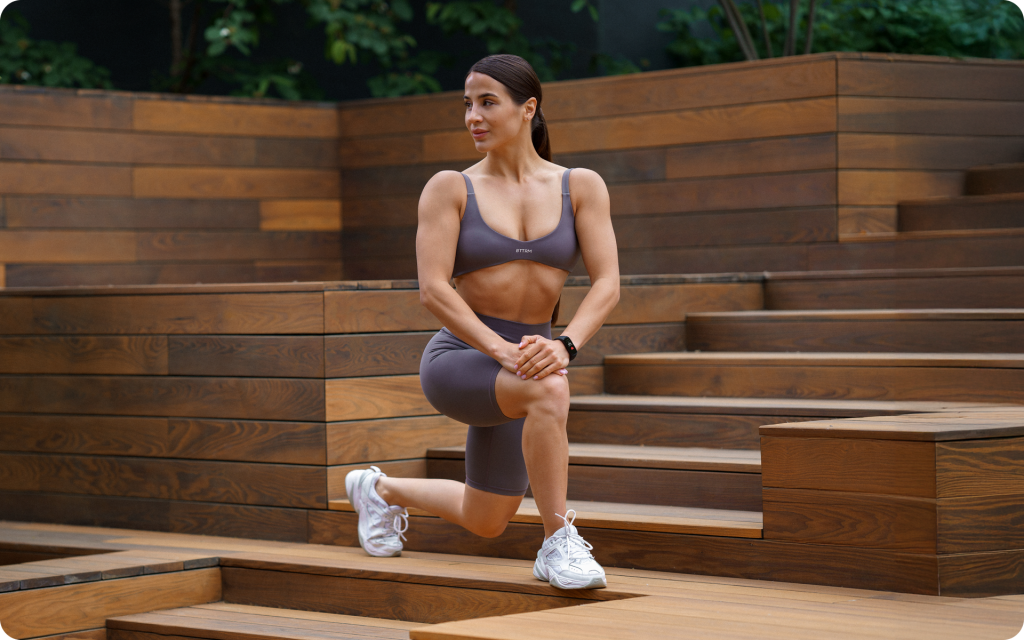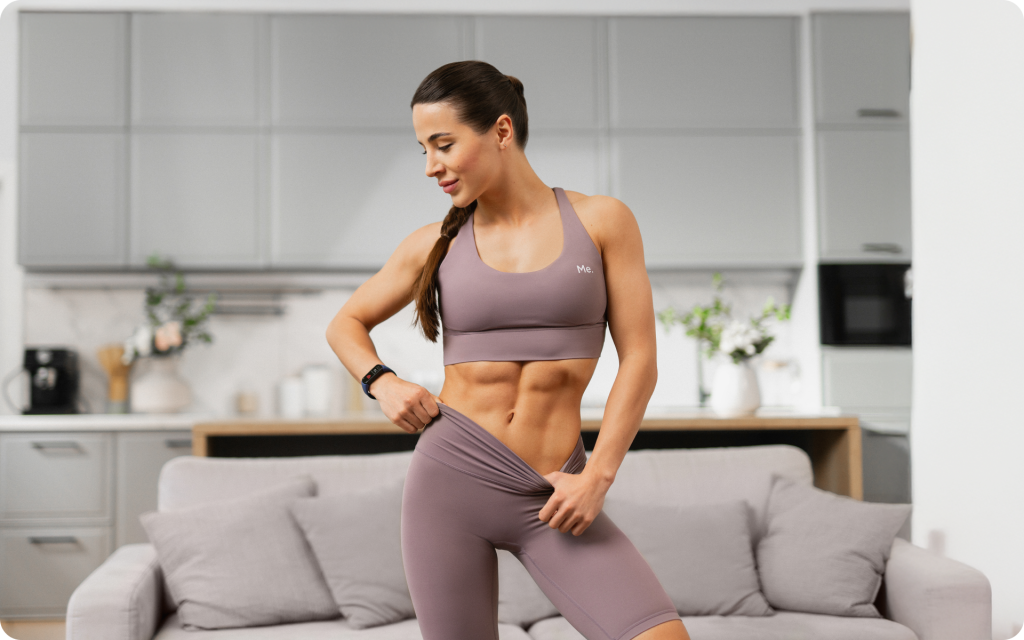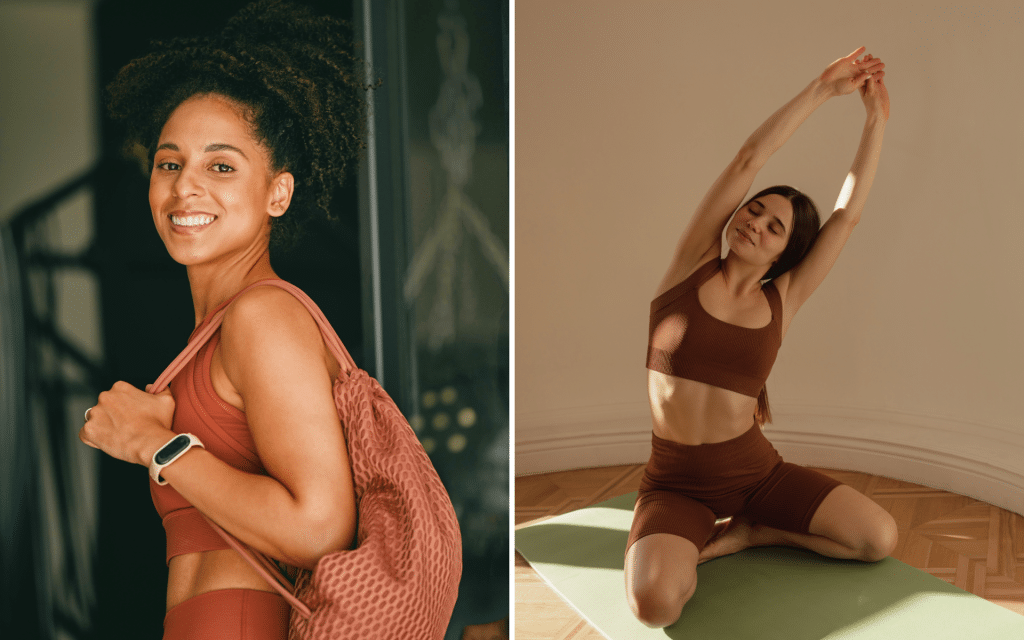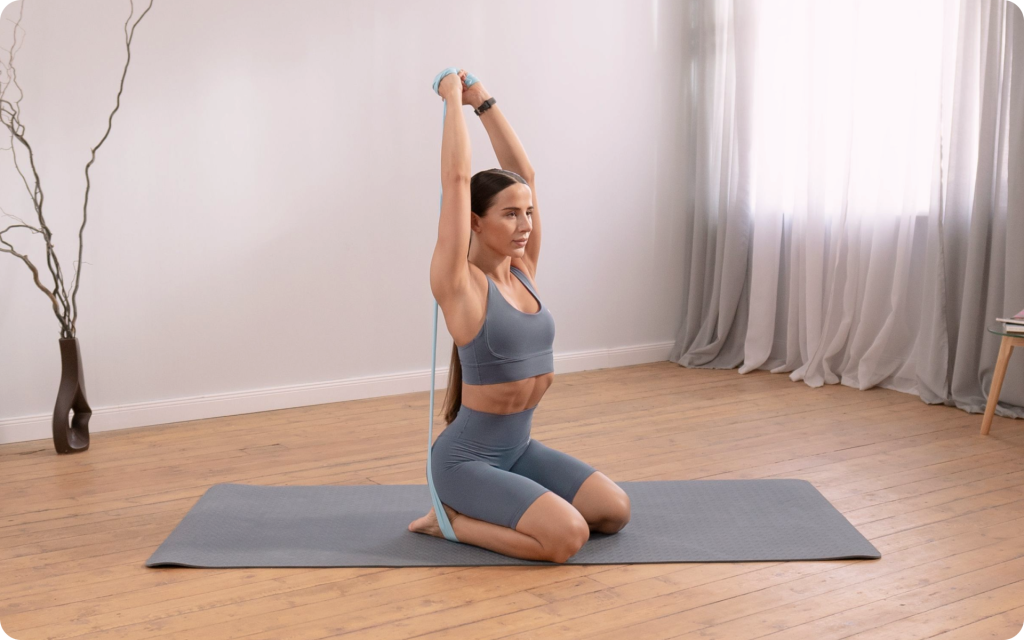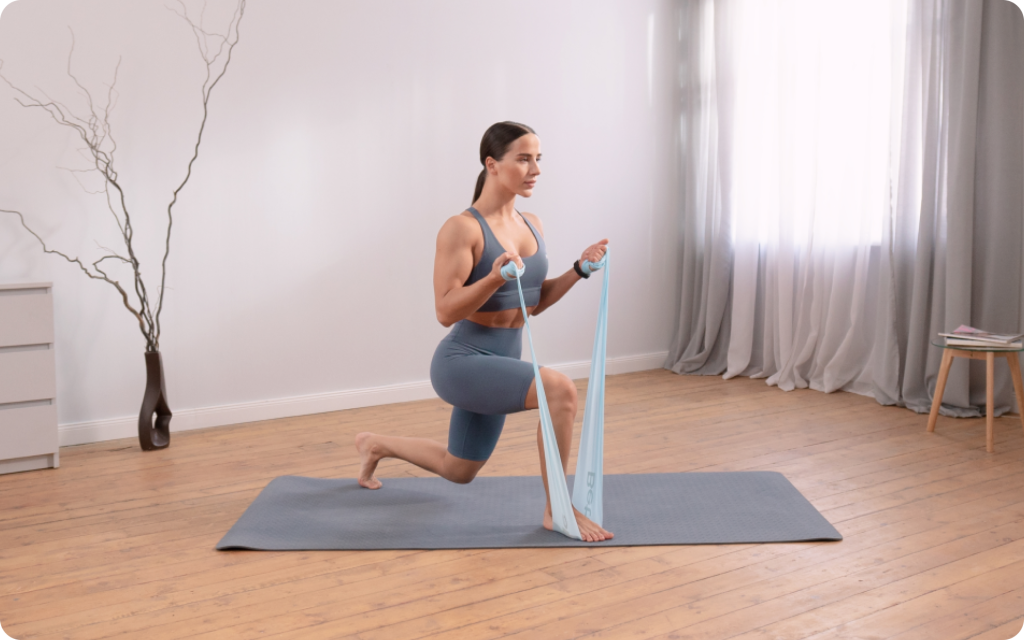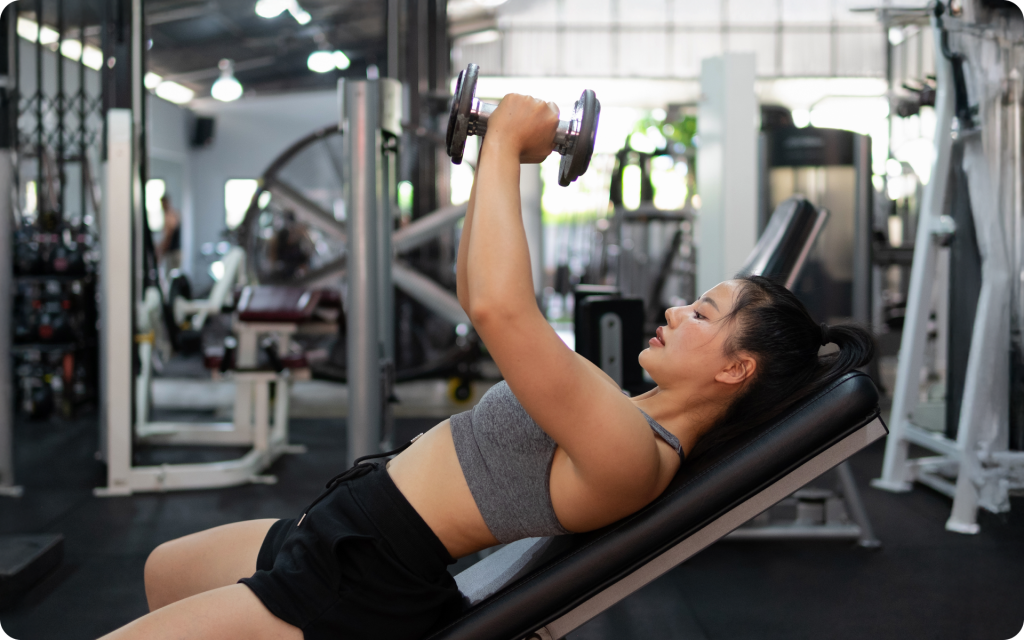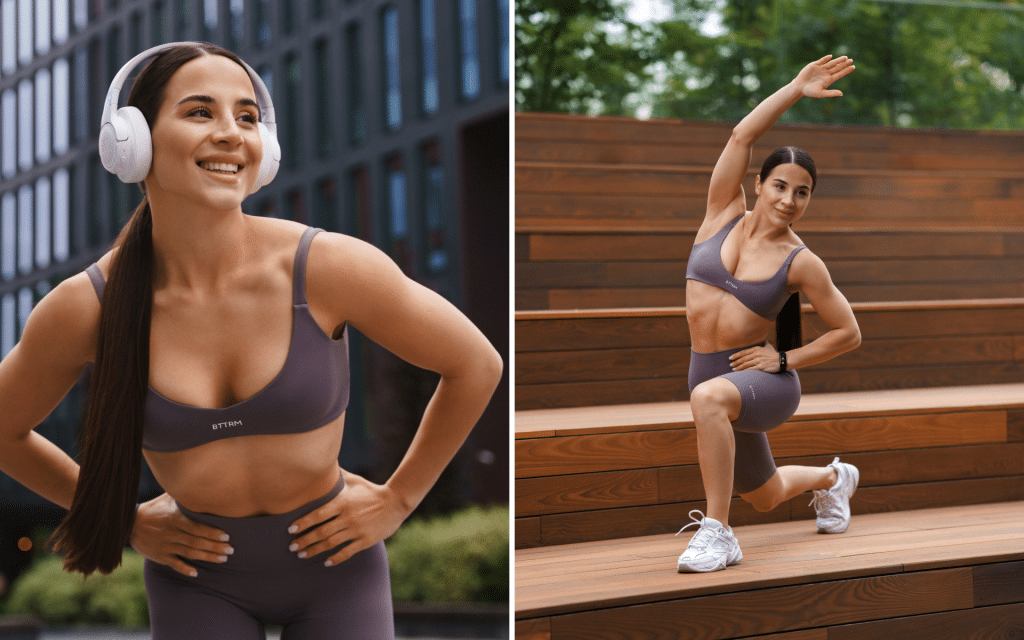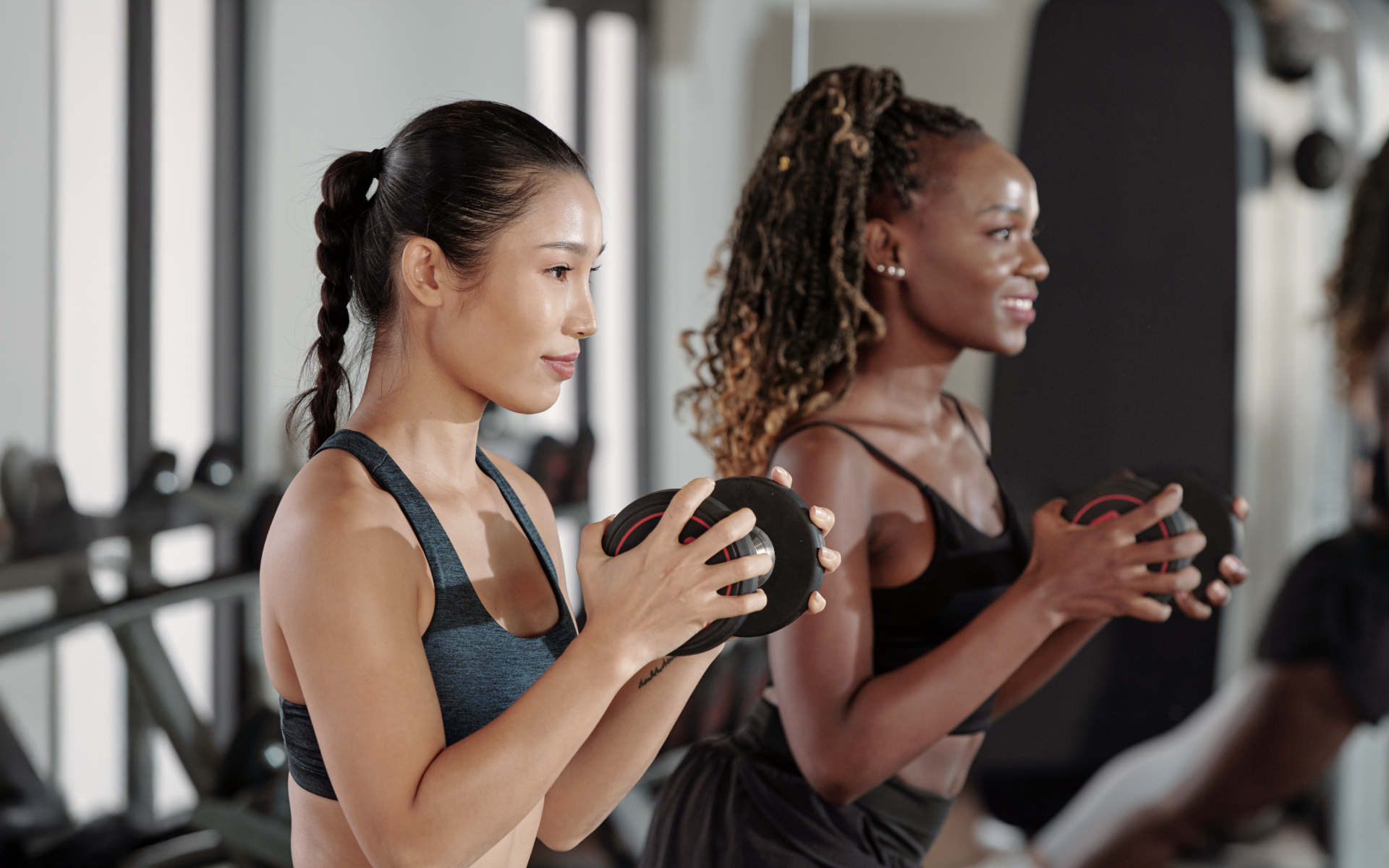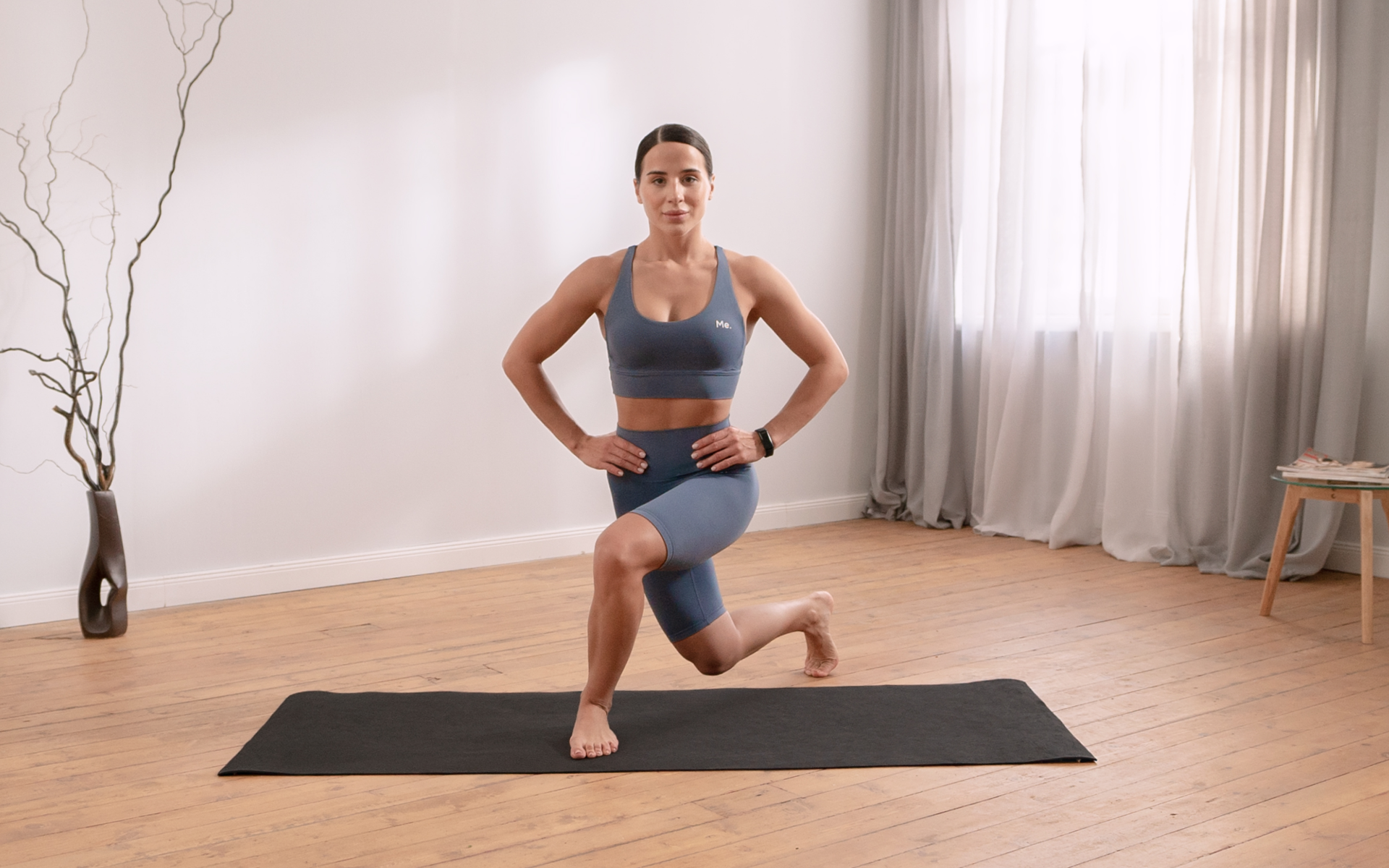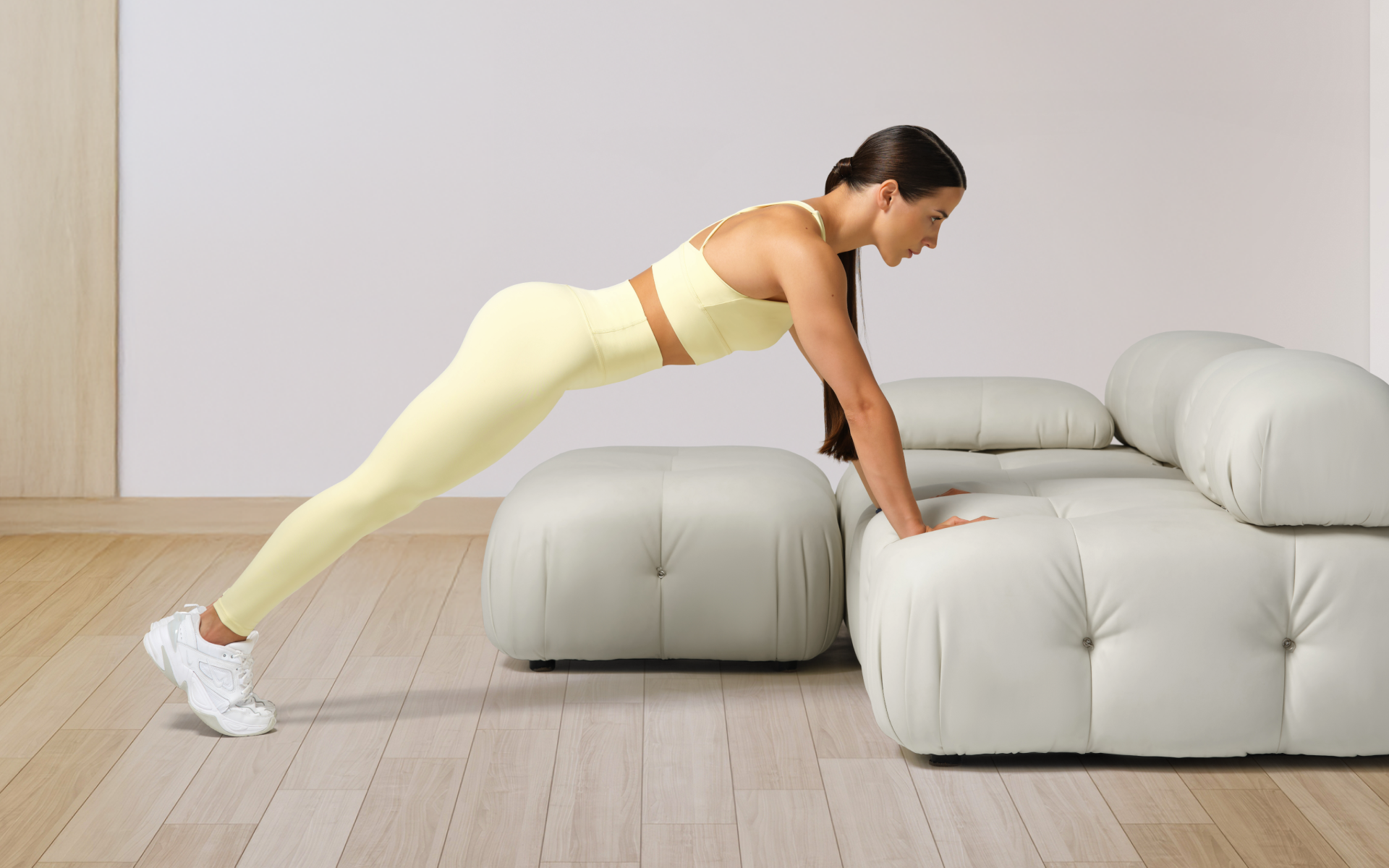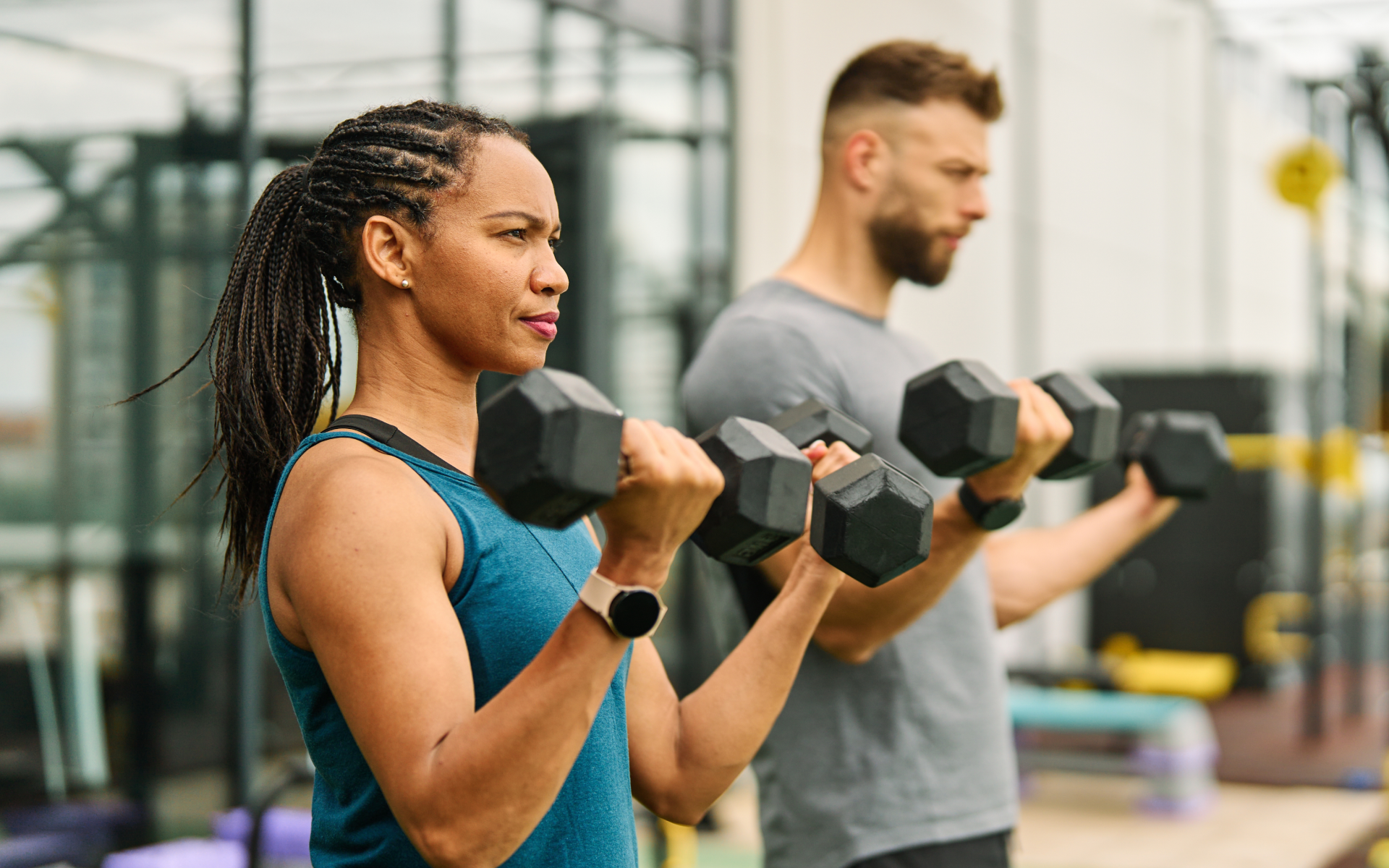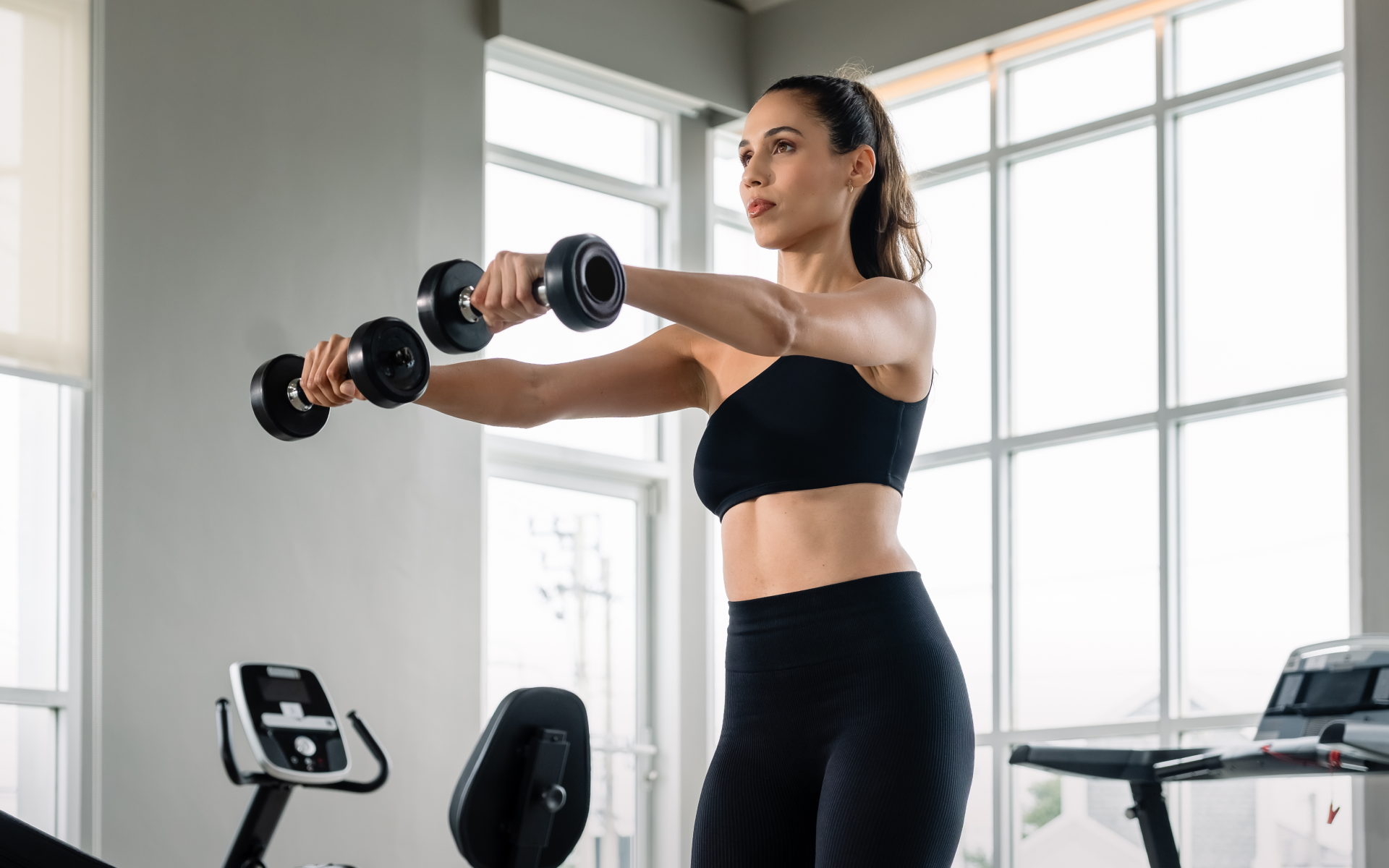Swimmers can train in two ways:
- Using dry-land exercises
- Training directly in the water.
Both swim training methods have their place, and each offers unique benefits.
Dry-land workouts might sound like they’re unrelated to swimming, but they play a crucial role in improving your overall performance. Exercises in the gym, like strength training, help you develop the muscles used in swimming.
They can build the foundation for:
- Faster sprints
- Better propulsion
- Reduced injury risks (1).
Meanwhile, aquatic training ensures that those gains are effectively translated into swimming movements, keeping the focus on coordination and endurance.
A balance of both gym and aquatic training is essential for swimmers to achieve their maximum potential.
Here’s what you need to know about gym workouts for swimmers and how to maximize their benefits.
Is A Gym Good For Swimming?
For swimmers aiming to enhance their performance, hitting the gym is more than just cross-training. Gym workouts are a way to develop specific physical attributes that directly impact swimming ability.
Enhances Muscle Strength
Muscle strength is the foundation of powerful strokes, starts, and turns.
By engaging in strength training, swimmers can increase the force their muscles generate.
This strength-building aspect translates into stronger pull and kick actions, which help propel the body through water more efficiently (2).
Exercises such as squats, deadlifts, or pull-ups target major muscle groups used in swimming, like the shoulders, back, and legs. Building strength on land gives swimmers an edge in generating power during explosive movements, such as pushing off the wall or maintaining speed.
Builds Core Stability
The core isn’t just your abs; it includes all the muscles around your abdomen, back, and pelvis (3).
These muscles stabilize your body while swimming, keeping you streamlined in the water. Core stability helps reduce hemodynamic resistance and improves efficiency (4).
Workouts like planks, Russian twists, and cable wood chops can work wonders in training your core. A strong core enables better rotation during strokes, particularly in freestyle and backstroke, where rolling through the hips is crucial (5).
Reasons why BetterMe is a safe bet: a wide range of calorie-blasting workouts, finger-licking recipes, 24/7 support, challenges that’ll keep you on your best game, and that just scratches the surface! Start using our app and watch the magic happen.
Improves Explosive Power
Explosive power is essential for starts and turns. It’s what enables you to push off the blocks quickly or drive off the wall during a flip turn (6).
Gym exercises like plyometric training, which includes jumping drills and medicine ball throws, are excellent for developing this type of power.
Plyometrics work by engaging the stretch-shortening cycle. This cycle refers to the rapid lengthening and shortening of muscles, which store and release energy for quick bursts of force (1).
Promotes Better Injury Prevention
Swimming can take a toll on the shoulders, often leading to overuse injuries, such as swimmer’s shoulder. Gym training helps counter this by strengthening smaller stabilizing muscles (2). Exercises such as external rotations or dumbbell reverse flies target these muscles, thereby improving shoulder health and balance.
Additionally, increasing overall muscle strength enhances joint stability, thereby reducing the likelihood of strain. Strengthening imbalances between muscles, such as the dominant and non-dominant sides, further protects you from injury (7).
Boosts Stroke Mechanics
A stronger body transfers energy more effectively, improving stroke mechanics.
With enhanced neuromuscular adaptations (the connection between nerves and muscles), swimmers gain better control over their movements (8).
For example, strength training can improve the precision of arm pulls during freestyle or butterfly strokes.
Movements like swim-specific cable pulls or using resistance bands mimic the motions of strokes, providing specific benefits that directly translate to improved swimming performance.
Supports Fatigue Resistance
Resistance training can enhance your body’s ability to sustain physical activity for more extended periods. By strengthening muscles, you delay the onset of fatigue during a race or practice. Stronger muscles require less effort to perform the same tasks, which conserves energy over time (9).
Combining endurance-focused gym sessions with swimming training can help build this stamina. Exercises using lighter weights and higher reps are particularly effective here.
Sharpens Mental Resilience
A benefit that often gets overlooked is the mental boost that comes with gym workouts.
Tackling challenging weightlifting or resistance routines builds discipline and confidence.
This mental resilience can translate to tougher swim training sessions or competitions.
When swimmers push through a gym workout, they’re training their minds to handle physical exertion and stay focused, even when fatigue begins to set in.
Encourages Overall Athleticism
Swimming requires balance, coordination, and body awareness.
Gym workouts expand these athletic attributes in ways the pool cannot.
Exercises like single-leg deadlifts or stability ball drills challenge your balance and improve overall coordination, which can enhance body control in the water.
By combining swimming with gym sessions, athletes become more well-rounded and capable of adapting to different challenges in and out of the pool.
Read more: The Powerful Benefits Of Walking On A Treadmill For 30 Minutes Every Day
Can I Do Swimming And Gym Together?
Yes, you can combine a swimming workout plan and gym workouts, and it can be highly beneficial when done right. Swimming builds endurance, cardiovascular fitness, and technique (10), while gym workouts improve strength, power, and stability (11).
Together, they create a well-rounded program for better performance and overall fitness.
To balance both, plan your gym sessions to complement your swimming.
So, what is a performance-boosting gym workout for swimmers?
Focus on strength and power in the gym (e.g., pull-ups, squats, or box jumps) and schedule these workouts on lighter swimming days. Prioritize quality over quantity to ensure you don’t overtrain.
Take precautions to avoid burnout. Allow for proper recovery by spacing out intense sessions and listening to your body.
Hydration, nutrition, and adequate rest are crucial for maintaining good health and achieving optimal results (12). This approach ensures you reap the benefits of both types of training without risking injury or fatigue.
How Should A Swimmer Train In The Gym?
When planning the best gym workout for swimmers, the goal is to complement their pool training without overloading their bodies. It’s about building the strength, power, and stability needed to enhance swimming performance while supporting efficient recovery and minimizing injury risks.
Start With A Dynamic Warm-Up
A dynamic warm-up is essential to prepare your body for exercise.
It increases blood flow, raises your heart rate, and activates the muscles you’ll be targeting in your workout (13).
Key warm-up moves for swimmers:
- Arm circles: Loosen the shoulders and improve mobility.
- Leg swings: Target the hip flexors and hamstrings.
- Spider lunges: Activate the hips, glutes, and core while stretching the body.
- Wall slides: Improve shoulder mobility and activate the upper back muscles.
Spend 5-10 minutes on these movements to ensure your joints and muscles are properly warmed up for the workout ahead.
Strength Training At Least Twice A Week
Strength training is the foundation of an effective gym workout for swimmers.
Stronger muscles improve propulsion and reduce the energy cost of each stroke (2).
Aim for full-body exercises with an emphasis on swim-specific muscle groups, particularly the:
- Shoulders
- Back
- Core
- Legs
Pull-ups, lat pulldowns, bench presses, squats, and planks are a few examples of ideal strength training exercises for a full-body gym workout for swimmers.
Incorporate Power Exercises
Power exercises develop explosive strength, which is crucial for achieving fast starts and making strong turns (14). These moves rely on quick, forceful muscle contractions.
Key power exercises:
- Medicine Ball Slams: Mimic the explosive movements required during dives off the starting block.
- Box Jumps: Build lower-body power for pushing off walls during flip turns.
- Clap Push-Ups: Enhance upper-body explosiveness, especially relevant for butterfly and freestyle swimmers.
Perform power exercises early in your workout to ensure maximum effort and proper form.
Include Core Stability Training
Core stability underpins almost every movement in swimming. A strong core provides balance, helps maintain a streamlined position, and improves energy transfer between the upper and lower body (15).
Best core exercises:
- Pallof Press: Strengthens core stability by resisting rotational forces.
- Cable Woodchops: Mimic the twisting motion of swimming while building rotational strength.
- Swiss Ball Rollouts: Target deep abdominal muscles that stabilize the spine while swimming.
Work On Mobility And Flexibility
Swimming requires a wide range of motion, particularly in the shoulders and hips.
Regular mobility exercises help keep these joints healthy and improve stroke efficiency.
Recommended mobility exercises:
- Band Pull-Aparts: Strengthen the small muscles around the shoulder while improving mobility.
- Hip Flexor Stretches: Loosen tight hips to support effective kick movements.
- Cat-Cow Stretch: Mobilize the spine and prepare the body for rotation in various strokes.
Devote 5-10 minutes at the end of your session for flexibility exercises to aid recovery and enhance joint health.
Balance Workload With Pool Training
Since aquatic training already involves intense cardiovascular work and sport-specific endurance, gym sessions should focus on complementing—not duplicating—that effort.
To avoid overtraining:
- Schedule strength-based gym workouts 2-3 times per week. Allow at least one rest day between gym days and heavy swim sessions.
- Prioritize quality over quantity. Aim for 45-60 minutes, focusing on proper technique rather than volume.
- Monitor fatigue levels. Use tools like Rate of Perceived Exertion (RPE) to adjust workloads as needed.
Recover Smartly
Recovery is crucial for improving performance and preventing injuries.
Ensure you’re getting enough rest between workouts and paying attention to nutrition.
Protein helps repair muscles, while carbohydrates replenish energy stores.
Hydrate adequately, especially after sweaty gym sessions, as dehydration can impact recovery and energy levels (16).
Read more: The Ultimate Guide to a 20-Minute Calisthenics Workout: Maximizing Results in Minimal Time
What Is A Good Gym Workout For Swimmers?
Warm-Up (5-10 Minutes)
- Arm Circles (2 sets of 10 forward, 10 backward)
- Leg Swings (2 sets of 10 per leg)
- Spider Lunges (2 sets of 8 per side)
- Wall Slides (2 sets of 10 reps)
Power Exercises
- Medicine Ball Slams (3 sets of 12-15 reps)
- Box Jumps (3 sets of 10-12 reps)
- Clap Push-Ups (3 sets of 8-12 reps)
Strength Training
- Pull-Ups (3-4 sets of 8-12 reps)
- Bench Press (3 sets of 8-12 reps)
- Squats (3 sets of 10-15 reps)
- Bulgarian Split Squats (3 sets of 10-12 per leg)
Core Stability
- Plank Dips (3 sets of 20 alternating dips)
- Swiss Ball Rollouts (3 sets of 12 reps)
- Pallof Press (3 sets of 15 reps per side)
Flexibility and Mobility (5-10 Minutes)
- Band Pull-Aparts (2 sets of 15 reps)
- Hip Flexor Stretches (hold for 20-30 seconds per side, 2 rounds)
- Cat-Cow Stretch (10 movements)
This gym workout includes stretching for swimmers to do before and after swimming and gym sessions.
What Exercises Can You Do To Swim Faster?
Swimming faster isn’t just about practicing in the pool; your gym routine plays a significant role, too. Researchers have demonstrated that specific exercises can enhance strength, power, and efficiency, all of which contribute to improved swimming speed.
Pull-Ups
Pull-ups target the latissimus dorsi muscles (the broad muscles of your upper back), which are critical for generating powerful strokes in freestyle, butterfly, and backstroke.
Strengthening these muscles enables a stronger pull phase, which increases propulsion.
How to do it:
- Grip a pull-up bar with your palms facing away at shoulder-width.
- Hang with your arms fully extended.
- Engage your core and pull yourself up until your chin clears the bar.
- Lower yourself down with control until you fully extend your arms again.
- Perform 3-4 sets of 8-12 reps.
Squats
Squats strengthen your glutes, quadriceps, hamstrings, and calves, which power your leg kicks and starts. Stronger legs drive better propulsion and faster wall push-offs.
How to do it:
- Stand with feet shoulder-width apart, toes slightly turned out.
- Lower your hips as if sitting back into a chair, keeping your chest up.
- Go as low as you can while maintaining form, ideally until your thighs are parallel to the floor.
- Push through your heels to stand back up.
- Perform bodyweight squats or add a barbell for resistance, doing 3-4 sets of 10-15 reps.
Medicine Ball Slams
Medicine ball slams develop explosive power, which contributes to faster starts and transitions. This plyometric exercise improves the coordination between your upper and lower body, similar to movements in swimming.
How to do it:
- Stand with feet shoulder-width apart, holding a medicine ball above your head.
- Brace your core and slam the ball down onto the ground as hard as possible.
- Catch the ball as it bounces, or retrieve it for the next rep.
- Perform 3 sets of 12-15 repetitions.
Plank Dips
Plank dips strengthen the core, which stabilizes your body in the water and helps maintain a streamlined position. A strong core reduces drag and increases efficiency during each stroke.
How to do it:
- Start in a forearm plank position, with your body in a straight line.
- Rotate your hips to one side, lowering them almost to the floor.
- Return to the plank position and repeat on the other side.
- Perform 3 sets of 20 total dips, alternating sides with each rep.
Box Jumps
Box jumps are a plyometric exercise that builds explosive lower-body power.
This lower-body power directly benefits starts and wall push-offs during turns, where bursts of speed are essential.
How to do it:
- Stand in front of a sturdy box or platform at a challenging height.
- Squat slightly to prepare, then jump onto the box, landing softly with both feet flat on the ground.
- Step down carefully and reset for the next jump.
- Perform 3 sets of 10-12 jumps with full effort.
Swim-Specific Cable Pulls
Cable pulls mimic the pulling action of swimming strokes, helping to build strength and endurance in the shoulders, arms, and back. The added strength helps with a stronger and more efficient pull phase.
How to do it:
- Set a cable machine to shoulder height and attach a single handle.
- Stand in a swim stance, bending slightly at the hips. This stance position resembles the starting position on the blocks, before diving into the water, except your feet are parallel to each other and facing forward.
- Keep your hands in front as you bend forward and pull the handle backward in a motion that simulates a swim stroke.
- Slowly return to the starting position.
- Perform 3 sets of 12-15 reps per arm.
Deadlifts
Deadlifts engage multiple muscle groups, including the hamstrings, glutes, and lower back. These muscles are critical for generating force during starts, turns, and maintaining body position in the water.
How to do it:
- Stand with feet shoulder-width apart, the barbell in front of you.
- Hinge at the hips and grip the bar just outside your knees.
- Keep your back straight as you lift the bar, extending your hips and knees to maintain proper posture.
- Lower the bar back down in a controlled motion.
- Perform 3-4 sets of 6-8 reps with proper form.
Dips
Dips build strength in your triceps, chest, and shoulders. This strength enhances the push phase of your stroke, providing you with greater propulsion through the water.
How to do it:
- Use parallel bars or a dip station to support your body weight.
- Lower yourself slowly until your elbows reach a 90-degree angle.
- Push back up until you fully extend your arms.
- Perform 3 sets of 10-12 reps.
How Do Swimmers Build Stamina?
Building stamina in swimming isn’t just about spending hours in the pool.
It’s a combination of focused training strategies that enhance endurance, improve energy efficiency, and boost overall fitness.
1. Interval Training
Interval training involves alternating between periods of high effort and lower-intensity recovery. For swimmers, this could mean swimming multiple sets of fast laps followed by slower-paced recovery intervals.
This type of training helps build both aerobic capacity (the ability to use oxygen efficiently) and anaerobic capacity (the ability to generate energy without oxygen for short bursts). Aerobic and anaerobic systems work together during swimming, so improving both is key to lasting stamina (17).
An example workout for beginners might involve swimming a 25-meter sprint, followed by a 50-meter slow-paced recovery.
When it comes to weight loss, progress is made by inches, not miles, so it’s much harder to track and a lot easier to give up. The BetterMe: Health Coaching app is your personal trainer, nutritionist, and support system all in one. Start using our app to stay on track and hold yourself accountable!
2. Long, Steady Swims
While shorter, intense sessions work on explosive stamina, longer swims help increase endurance over time. These lower-intensity sessions force your body to sustain effort for extended periods. This endurance strengthens your cardiovascular system, which pumps oxygen to working muscles, and trains your muscles to use that oxygen more efficiently.
For a recreational swimmer, this could mean gradually increasing pool time by adding 5-10 more minutes each week at a consistent, comfortable pace.
3. Strength Training
Strength training is crucial for improving stamina in ways that directly impact swimming.
While it may not seem evident at first, building stronger muscles helps prevent early fatigue. When your muscles are stronger, they perform each stroke with less effort, allowing you to swim longer before tiring (1). Enhancing strength can improve the quality of swim workouts for beginners.
Focus on building a gym workout for swimmer beginners that targets key muscle groups such as the shoulders, back, core, and legs. High-rep, low-weight resistance exercises can enhance muscular endurance, improving the ability to sustain activity over time.
4. Cross-Training
Cross-training involves engaging in activities outside of swimming, such as running, cycling, or rowing. These exercises strengthen the heart and lungs, which are vital for stamina. They also allow swimmers to train without the repetitive strain that often accompanies too much pool work (18).
For instance, a light jog or spin on a bike can not only supplement swimming but also act as active recovery on lighter training days.
5. Improving Stroke Efficiency
Stamina isn’t only about energy output; it’s also about how efficiently you use that energy. Poor stroke technique wastes energy, which makes you tire out faster.
For instance, excessive kicking or uneven arm pulls can quickly deplete energy reserves.
Working on stroke mechanics through drills, video analysis, or coaching can make each movement smoother and more effective. Using tools like hand paddles or kickboards during practice can help isolate parts of the stroke for focused improvement.
6. Consistent Progression In Training
Gradually increasing the intensity, distance, or duration of swims is key to improving stamina. This principle, known as progressive overload, allows the body to adapt to greater challenges over time.
Start with manageable goals, such as swimming 500 meters continuously.
Then, add more lengths or reduce the rest between sets as you get stronger.
Consistency is what leads to improvements in both energy use and endurance.
7. Adequate Recovery
Stamina training isn’t just about how hard you work out, but also how well you recover.
Recovery periods allow muscles to repair and grow stronger, while also preventing overtraining and burnout.
Active recovery, such as light swimming or yoga, helps maintain blood flow to muscles without taxing your body. Getting enough sleep, staying hydrated, and maintaining a balanced diet with a sufficient amount of protein and carbohydrates also contribute to better recovery and long-term stamina gains.
8. Mental Conditioning
Stamina isn’t just physical. Building mental endurance can help swimmers push through tough sessions and maintain focus during long races. Techniques such as visualization (picturing yourself completing a challenging swim) and mindfulness training enhance mental resilience.
Breaking swims into smaller, manageable goals can also help. For example, focus on completing each 25-meter segment rather than thinking about the full 400 meters ahead.
Swimming can contribute to losing belly fat due to its elevated caloric burn, but it’s not targeted fat loss. When you swim, your body burns calories, which can lead to overall fat loss, including in the abdominal area (19). Consistent swimming, combined with a healthy diet, is crucial for effectively reducing body fat. Additionally, no exercise or workout will specifically target the loss of fat from your stomach. No one can target fat loss to a region of the body. It occurs throughout the entire body when you consume fewer calories than you burn. Swimming does not increase height because your genetics determines height. However, swimming can improve posture by strengthening the core and back muscles, which may create the appearance of being taller. Yes, swimming builds muscle, improves cardiovascular fitness, and enhances endurance. It works the entire body, targeting both large and small muscle groups. Regular swimming paired with a healthy diet can help you achieve a lean, strong, and toned physique. A swimmer’s physique typically includes broad shoulders, a strong upper back, and a lean, streamlined torso. This body type results from repetitive swimming movements and aerobic conditioning, which build muscle while maintaining a low body fat percentage.Frequently Asked Questions
Does swimming make you lose belly fat?
Will swimming make you taller?
Can you get a fit body by swimming?
What is a swimmer’s physique?
The Bottom Line
The gym isn’t just “good” for swimmers; it’s a game-changer.
Gym training builds strength, power, and endurance, while also enhancing technique and reducing the risk of injury. Each of these factors contributes to better performance in the water. With a well-structured plan, swimmers can use gym workouts to complement their pool training and make lasting improvements.
DISCLAIMER:
This article is intended for general informational purposes only and does not serve to address individual circumstances. It is not a substitute for professional advice or help and should not be relied on for making any kind of decision-making. Any action taken as a direct or indirect result of the information in this article is entirely at your own risk and is your sole responsibility.
BetterMe, its content staff, and its medical advisors accept no responsibility for inaccuracies, errors, misstatements, inconsistencies, or omissions and specifically disclaim any liability, loss or risk, personal, professional or otherwise, which may be incurred as a consequence, directly or indirectly, of the use and/or application of any content.
You should always seek the advice of your physician or other qualified health provider with any questions you may have regarding a medical condition or your specific situation. Never disregard professional medical advice or delay seeking it because of BetterMe content. If you suspect or think you may have a medical emergency, call your doctor.
SOURCES:
- Effect of Different Types of Strength Training on Swimming Performance in Competitive Swimmers: A Systematic Review (2022, open.springeropen.com)
- Strength Training in Swimming (2022, ncbi.nlm.nih.gov)
- Anatomy, Abdomen and Pelvis: Abdominal Wall (2023, ncbi.nlm.nih.gov)
- Effects of core stability training on swimmers’ specific performance: A systematic review with meta-analysis (2025, sciencedirect.com)
- A strong core is essential for powerful swimming (n.d., humankinetics.com)
- Why Competitive Swimmers Need Explosive Power (2010, journals.lww.com)
- Occurrence of Muscle Imbalance and Risk of Injuries in Athletes using Overhead Movements: A Systematic Review (2021, researchgate.net)
- The Effects of 12 weeks of Neuromuscular Power Training on Elite Swimmers (2015, researchgate.net)
- Adaptations to Endurance and Strength Training (2018, ncbi.nlm.nih.gov)
- Effect of regular swimming exercise on the physical composition, strength, and blood lipid of middle-aged women (2015, ncbi.nlm.nih.gov)
- Strength training: Get stronger, leaner, healthier (2023, mayoclinic.org)
- 5 nutrition tips to maximize your workouts (2023, mayoclinichealthsystem.org)
- Warm Up, Cool Down (2024, heart.org)
- Exercises to Improve Power (2022, issaonline.com)
- Effect of Core Training on Skill Performance Among Athletes: A Systematic Review (2022, frontiersin.org)
- How to optimise swimming recovery after a hard workout (n.d., swimming.org)
- Physiological Responses During High-Intensity Interval Training in Young Swimmers (2021, frontiersin.org)
- Effects of cross-training. Transfer of training effects on VO2max between cycling, running and swimming (1994, researchgate.net)
- A comparison of the effects of swimming and walking on body weight, fat distribution, lipids, glucose, and insulin in older women–the Sedentary Women Exercise Adherence Trial 2 (2010, pubmed.ncbi.nlm.nih.gov)
